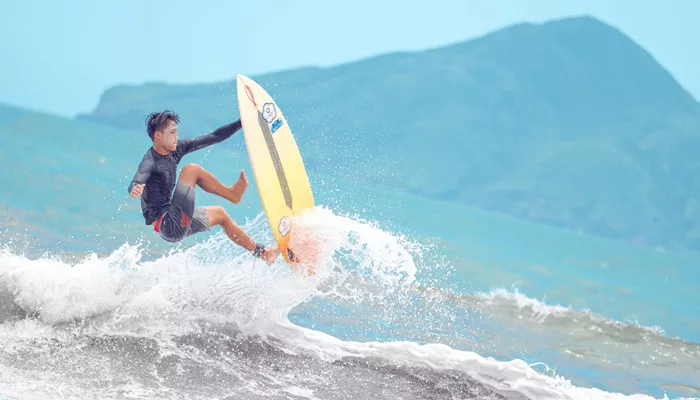Surfing is an exhilarating sport that offers a unique connection with nature, but it is not without its risks. While most surfers are aware of the obvious dangers—such as strong waves, wipeouts, and collisions—there are hidden threats lurking beneath the surface that can be deadly. Understanding these dangers is crucial for surfers of all levels to stay safe in the water.
Understanding the Hidden Dangers of Surfing
Surfing is often perceived as a relatively safe sport, but beneath the thrill lies a range of hazards that can catch even the most experienced surfers off guard. These dangers, often overlooked, can lead to serious injury or even death. This article explores the less obvious but potentially fatal risks of surfing.
Rip Currents – The Silent Killer
One of the most underestimated dangers in surfing is rip currents. These powerful channels of water move away from shore, dragging unsuspecting surfers into deeper waters.
How Rip Currents Form
Rip currents occur when water that has been pushed toward shore by waves finds an exit channel back to the ocean. They can form near sandbars, piers, or rocky formations and are difficult to detect for the untrained eye.
How to Escape a Rip Current
If caught in a rip current, the worst thing to do is panic and try to swim directly back to shore. Instead:
Stay calm and float to conserve energy.
Swim parallel to the shoreline until out of the current.
Once free, angle back toward shore.
Signal for help if unable to escape.
Hidden Ocean Floor Hazards
The ocean floor presents its own set of risks that surfers often ignore.
Shallow Reefs and Rock Formations
Reefs and rocks beneath the surface can cause severe injuries, including lacerations, broken bones, and concussions. Some of the world’s best surf spots, such as Pipeline in Hawaii, are notorious for their razor-sharp reefs.
Sandbars and Shorebreaks
Shallow sandbars and powerful shorebreak waves can cause spinal injuries, particularly when surfers are thrown headfirst into the bottom.
Marine Life – Unseen Threats in the Water
The ocean is home to various marine creatures, some of which can pose a significant threat to surfers.
Sharks and Predatory Marine Life
While shark attacks are rare, they remain a real danger in certain locations. Surfers should be aware of local shark activity and avoid dawn and dusk sessions when sharks are most active.
Jellyfish and Stingrays
Jellyfish stings can range from mild irritation to life-threatening reactions. Some species, like the box jellyfish, have venom that can cause cardiac arrest. Stingrays, commonly found in shallow waters, can inflict painful wounds that may become infected.
Hypothermia and Cold-Water Shock
Surfers often underestimate the dangers of cold water, particularly in locations with strong offshore winds or during winter months.
Effects of Cold-Water Exposure
Cold-water shock can cause involuntary gasping, increasing the risk of drowning.
Hypothermia sets in when the body loses heat faster than it can generate, leading to confusion, loss of coordination, and eventual unconsciousness.
Prevention Tips
Wear an appropriate wetsuit for water temperature.
Limit time in the water in extreme cold conditions.
Warm up immediately after exiting the water.
Surfboard-Related Injuries
A surfboard can be as dangerous as the waves themselves, especially in crowded surf zones.
Blunt Force Trauma
Surfboards can hit surfers in the head or body during wipeouts, leading to concussions, broken ribs, or knocked-out teeth.
Leash Hazards
While a surfboard leash prevents losing the board, it can also become a hazard. A tangled leash around the legs can limit mobility, while strong currents may turn the board into a deadly anchor.
Overcrowded Surf Spots
Crowded lineups increase the risk of collisions and aggressive encounters.
Surfer Collisions
With multiple surfers competing for waves, the likelihood of accidents increases. Beginners should be especially cautious in busy surf spots.
Localism and Surf Rage
Some surf spots are known for localism, where territorial surfers may become aggressive toward outsiders. Understanding local etiquette and showing respect can help avoid confrontations.
Fatigue and Dehydration – The Silent Dangers
Exhaustion is often overlooked but can be fatal in extreme conditions.
How Fatigue Impacts Performance
Slower reaction times increase the risk of wipeouts.
Weak paddling reduces the ability to escape rip currents or reach safety.
Decision-making ability declines, leading to poor choices in the water.
Preventing Fatigue and Dehydration
Stay hydrated before and after surf sessions.
Eat energy-sustaining foods.
Listen to your body and know when to rest.
Conclusion
Surfing is an incredible sport, but the ocean is unpredictable. Understanding and preparing for these hidden dangers can mean the difference between a great session and a life-threatening situation. Always respect the ocean, stay informed, and prioritize safety to ensure many years of wave-riding adventures.

